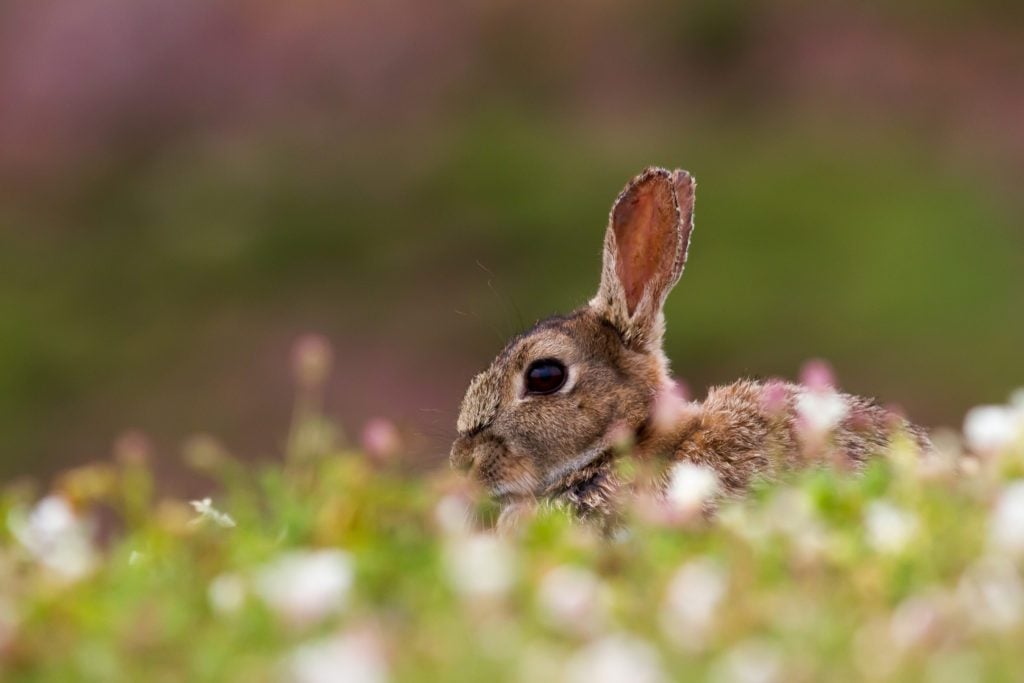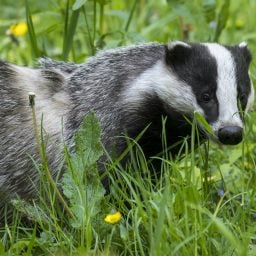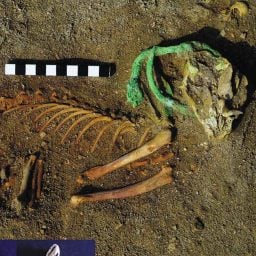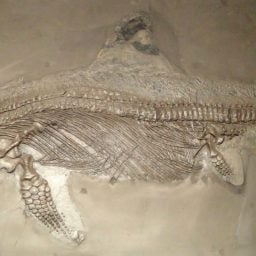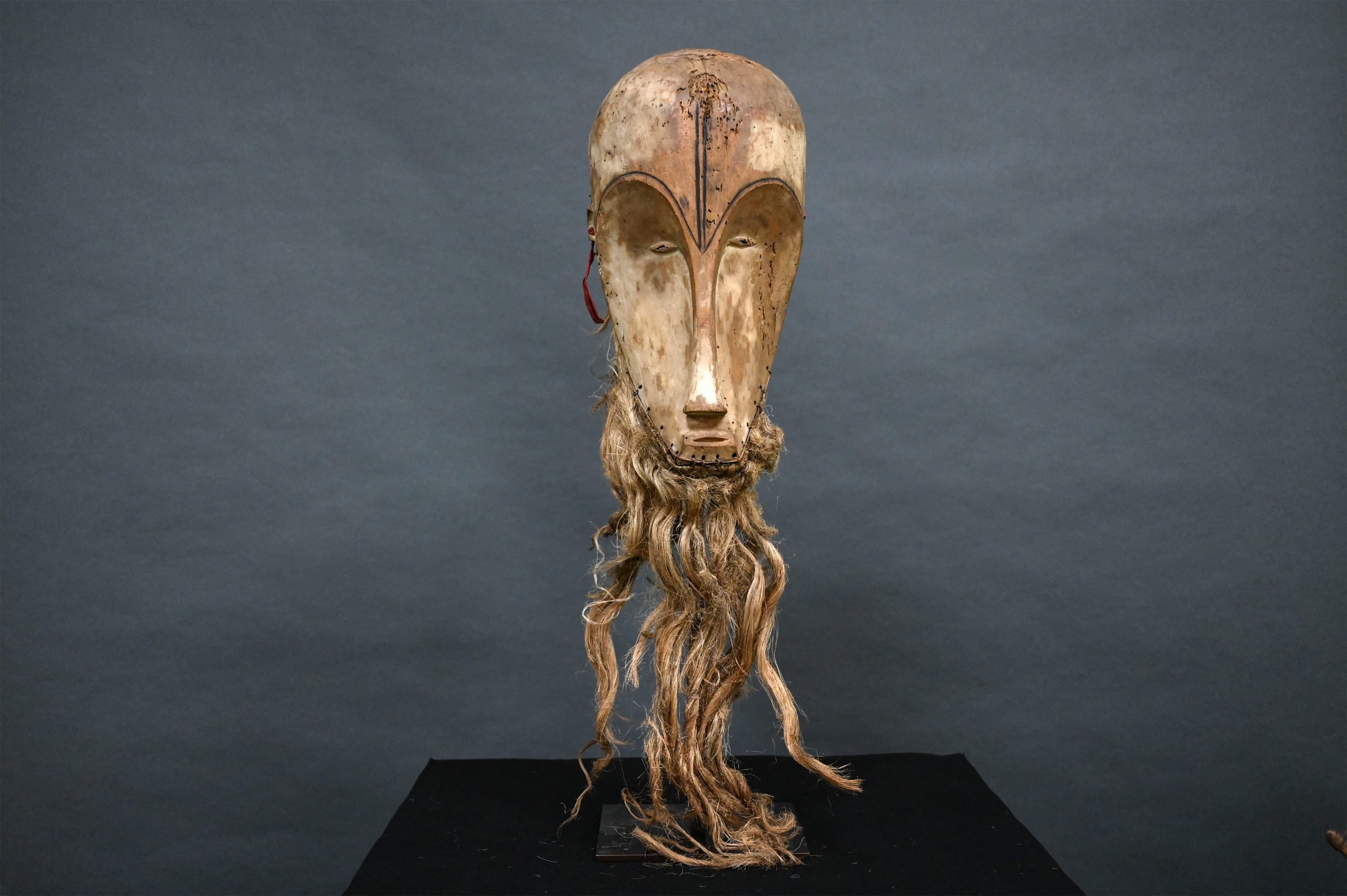Just in time for Easter, a family of rabbits—you heard that right—has assisted in a major archaeological discovery on Skokholm Island in Wales. The Welsh bunnies served as unlikely excavators, uncovering ancient shards of pottery and Stone Age tools while burrowing out a new home.
Richard Brown and Giselle Eagle, the wardens of the island—which is so beautiful it’s been nicknamed “Dream Island”—spotted the fresh rabbit hole and took a look. When they noticed ancient artifacts at the entrance, they sent photos off to two experts on the mainland, Jody Deacon, curator of prehistoric archaeology at Amgueddfa Cymru the National Museum Wales, and Andrew David, a prehistoric stone tools expert.
The rabbits discovered a shard from a 3,750-year-old bronze age burial urn and a “bevelled pebble,” an ancient tool that was likely made by hunter gatherers in the Mesolithic period about 9,000 years ago. Both are first-of-their-kind discoveries for the island, reports the Guardian.
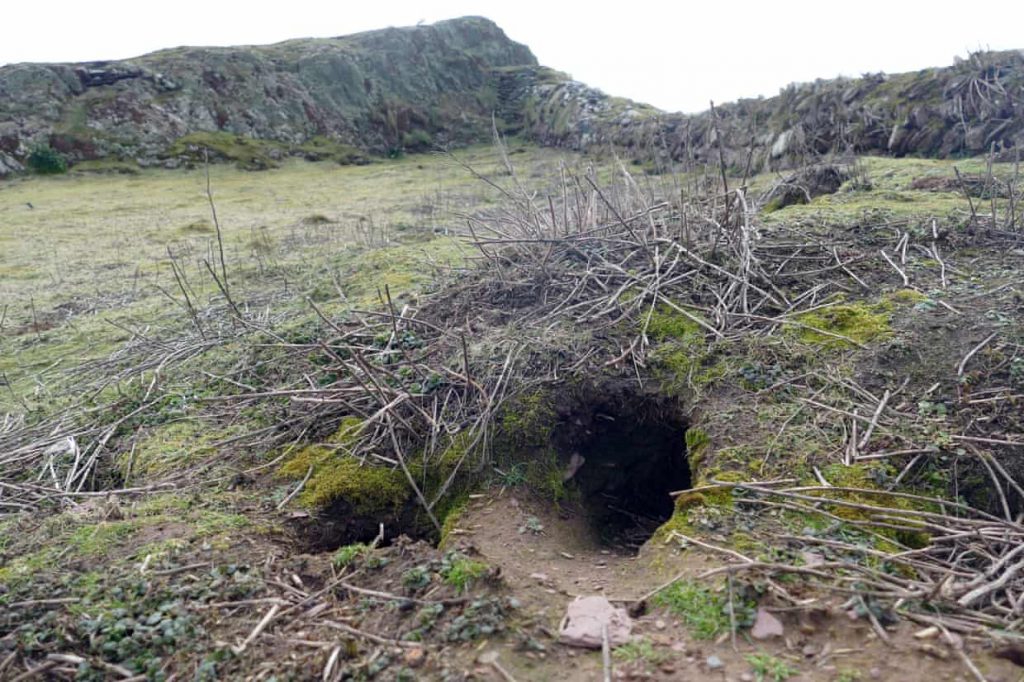
The rabbit hole where Skolkholm wardens discovered ancient artifacts. Photo by Richard Brown and Giselle Eagle, courtesy of the Wildlife Trust of South and West Wales.
The pebble is “thought to have been used in tasks like the preparation of seal hides for making skin-clad watercraft, or for processing foods such as shellfish,” David wrote in an email after evaluating the photos of the find.
“This is an incredibly exciting discovery,” the wardens wrote on the Skokholm Blog. “It is rather mind blowing that for thousands of years, people have returned to this same area, some of them perhaps working at seal skins, perhaps building skin boats, others burying their dead.”
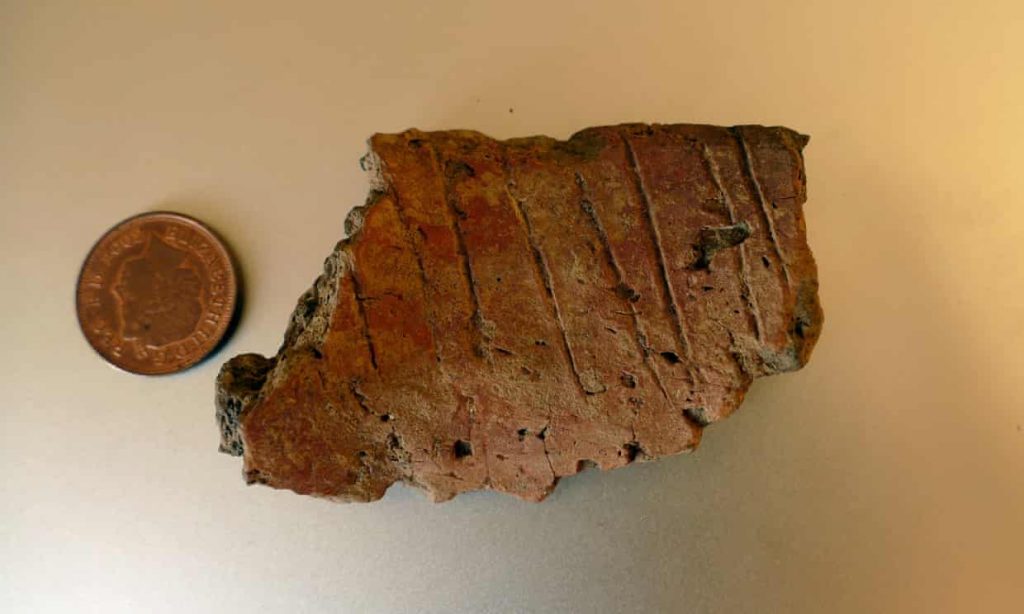
Rabbits uncovered this “bevelled pebble” tool dating from the late Mesolithic period, on the Welsh island of Skokholm. Photo by Richard Brown and Giselle Eagle, courtesy of the Wildlife Trust of South and West Wales.
“Although these types of tools are well known on coastal sites on mainland Pembrokeshire and Cornwall, as well as in Scotland and northern France, this is the first example from Skokholm, and the first firm evidence for late Mesolithic occupation on the island,” David added.
Today, Brown and Eagle are the only inhabitants of the island, which lies two miles off the Pembrokeshire coast.
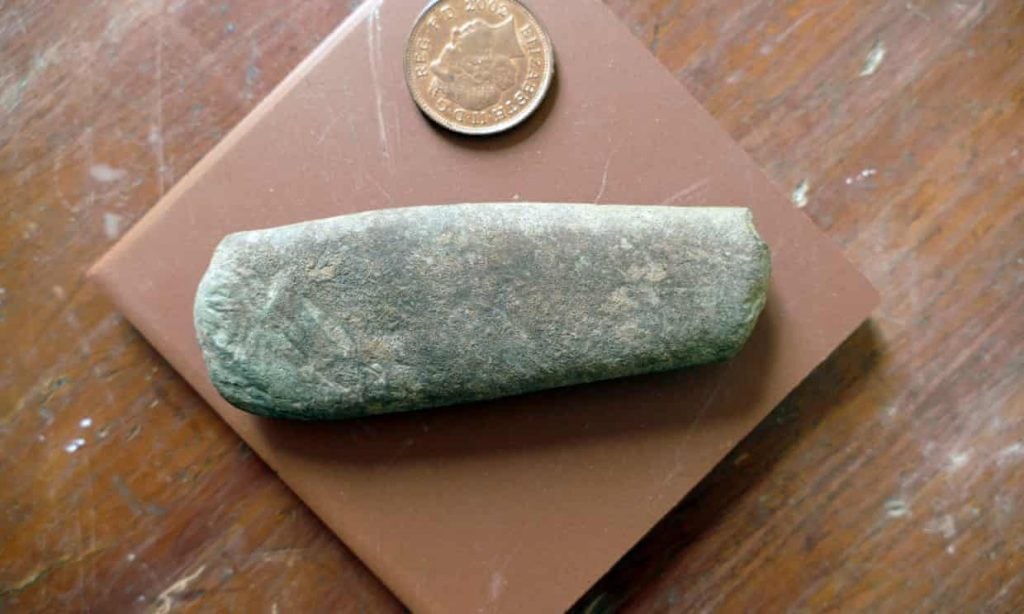
Rabbits uncovered this pottery fragment, likely part of a bronze age burial urn, on the Welsh island of Skokholm. Photo by Richard Brown and Giselle Eagle, courtesy of the Wildlife Trust of South and West Wales.
Rabbits, on the other hand, have a long history on Skolkholm. Vikings settled the island in the late 10th century and used it as a rabbit farm, a common practice in the era, according to the Welsh Wildlife Trust. Some of the rabbits living there today may even be descendants from these Medieval critters.
The trust plans to conduct archaeological surveys of the island later this year, once lockdown restrictions lift.
Follow Artnet News on Facebook:
Want to stay ahead of the art world? Subscribe to our newsletter to get the breaking news, eye-opening interviews, and incisive critical takes that drive the conversation forward.
